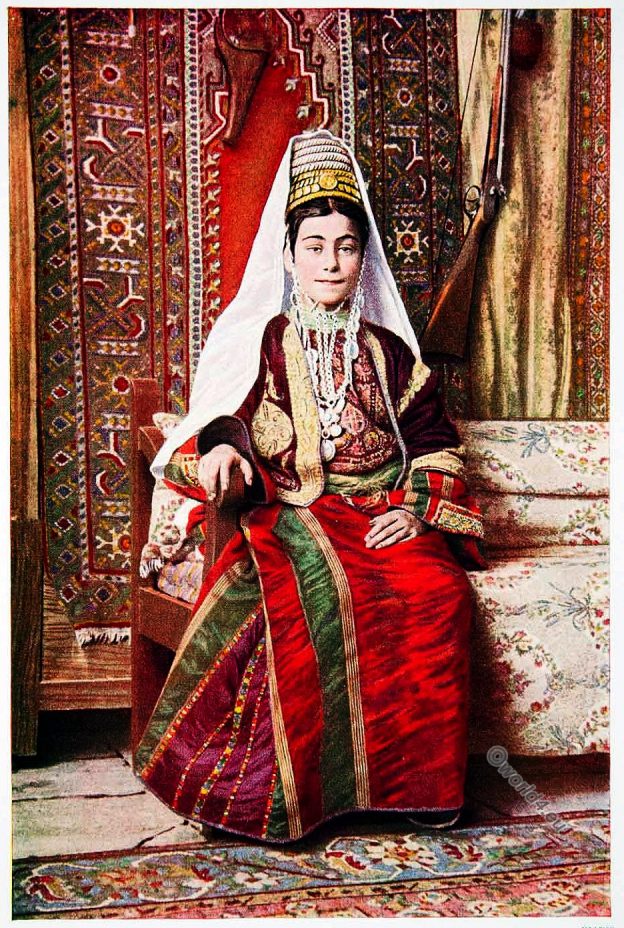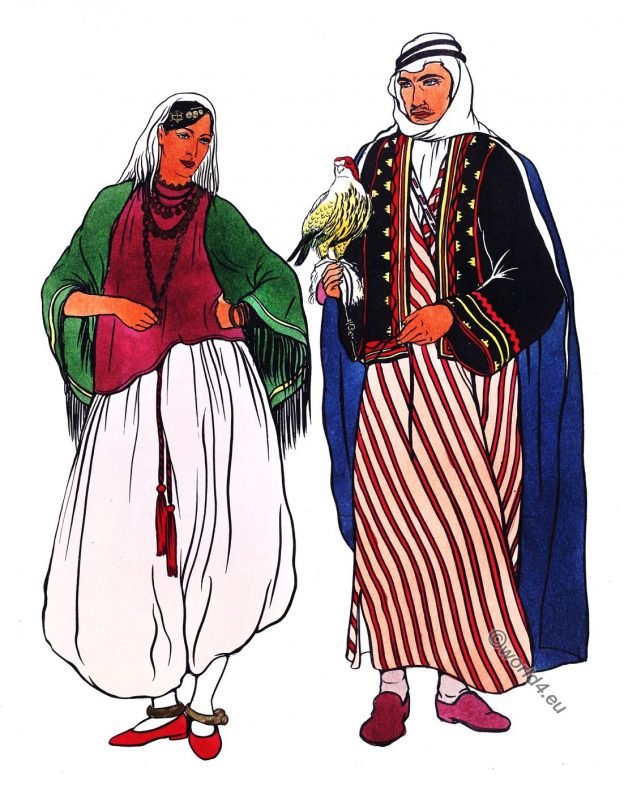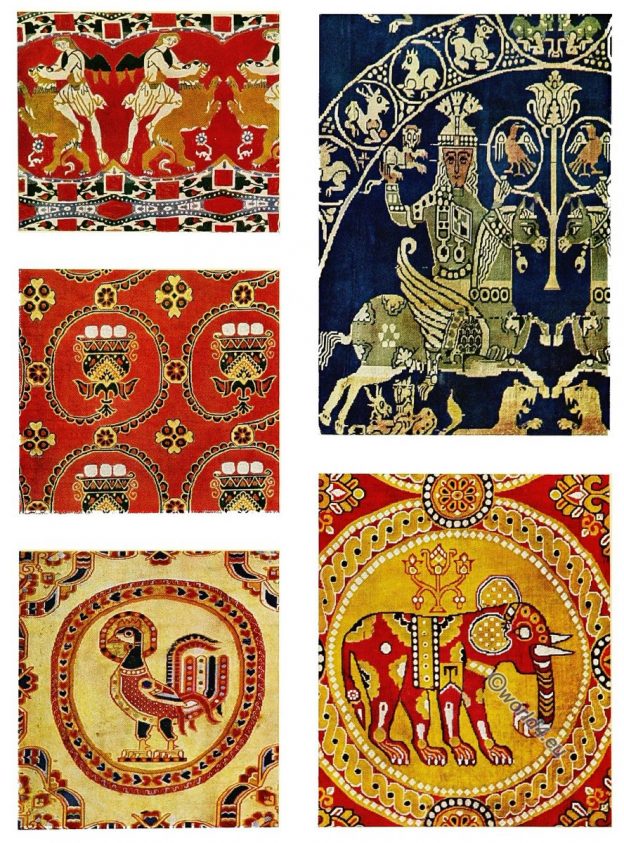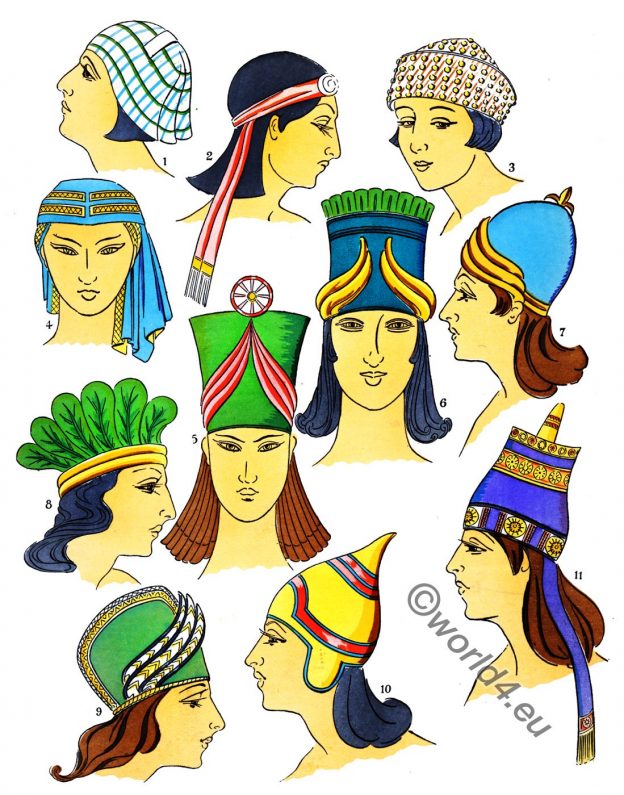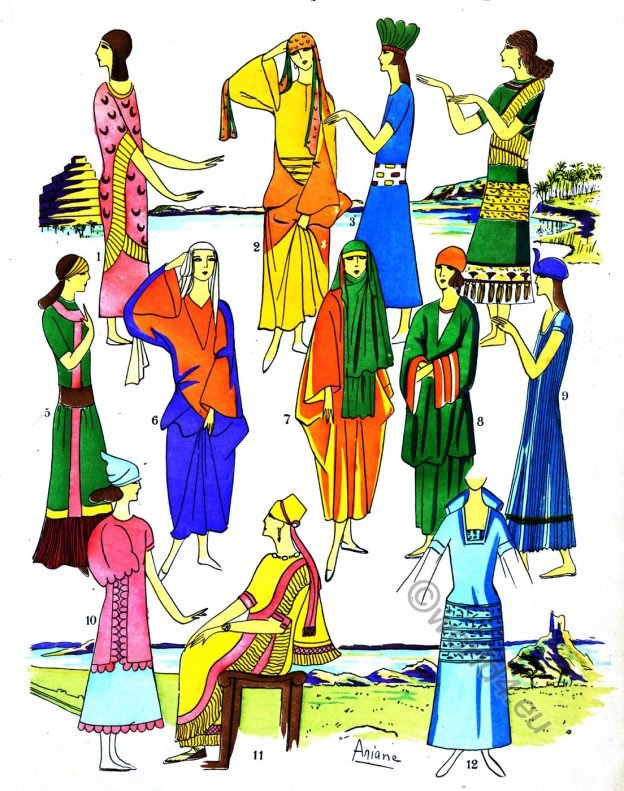Characteristic garment of the modern Egyptian population. A variation of the Gallebaya called “kamis”. The material is black cotton (Winter).
Category: Middle East
Married Woman of Bethlehem in richly colored dress.
Married woman from Bethlehem. Over the richly colored dress, a short embroidered jacket is worn.
The dress of the Arabs. Affluent class. Pictorial work.
The name Arab originally was reserved for the nomad tribes east of Palestine and in the Syro-Arabian desert, but today it is generally used for most of the surviving Semitic peoples who, in addition to living in Arabia, are to be found in Mesopotamia, North Africa, the western shores of the Red Sea, and the eastern shores of the Persian Gulf.
Antique Fabrics from Egypt. Coptic Silks. Silks from Alexandria.
Antique Fabrics. Red silk, patterned with figures of Samson and the Lion. Fabric with elephant pattern. Fabric with cock pattern, Persia.
Mesopotamia. Luxurious Assyrian dresses, coats and shawls.
Mesopotamia. Luxurious Assyrian dresses, coats and shawls. Fashion common to both sexes.
Assyrian Blouses and Ensembles. Costumes common to both sexes.
Babylonian gown. Tunic, blouses and ensembles. Costumes common to both sexes. The Luxurious Assyrian Costumes
The warlike women in Asia Minor. Assyrian Garments and Dresses.
Garments and Dresses of the most sporting women of antiquity. Warlike women in Asia Minor.
The Mitre, The Hat and The Coiffure of Mesopotamia.
Assyrian fashion of both genders. The Mitre, The Hat and the Coiffure of Mesopotamia. The famous Phrygian bonnet. The Tiara and diadem.
Mesopotamia. Fashionable Assyrian women and their elegant costumes.
Many periods of elegance have characterized the Assyrian and Babylonian or Chaldean dynasties.
Women from Aden, Jemen 1885.
Native women from Aden in traditional dress, 1885.


